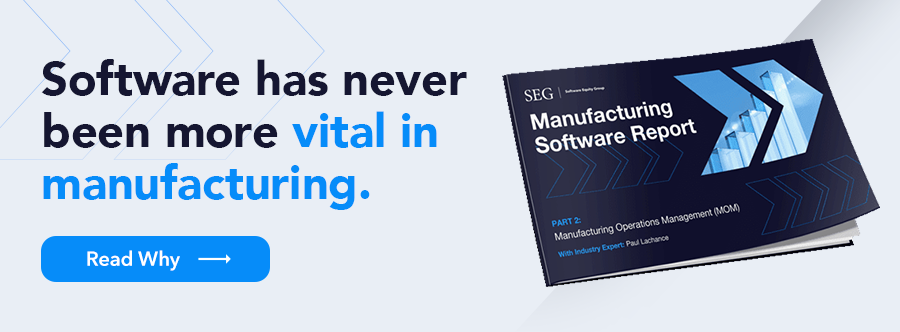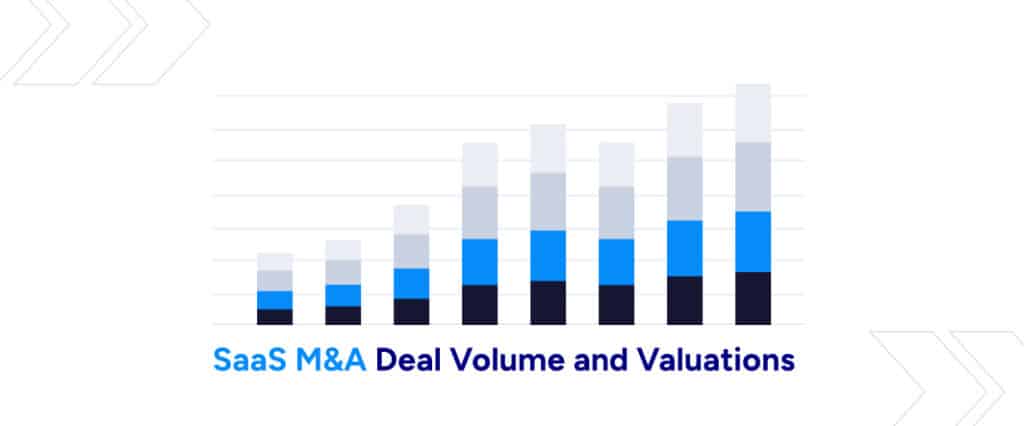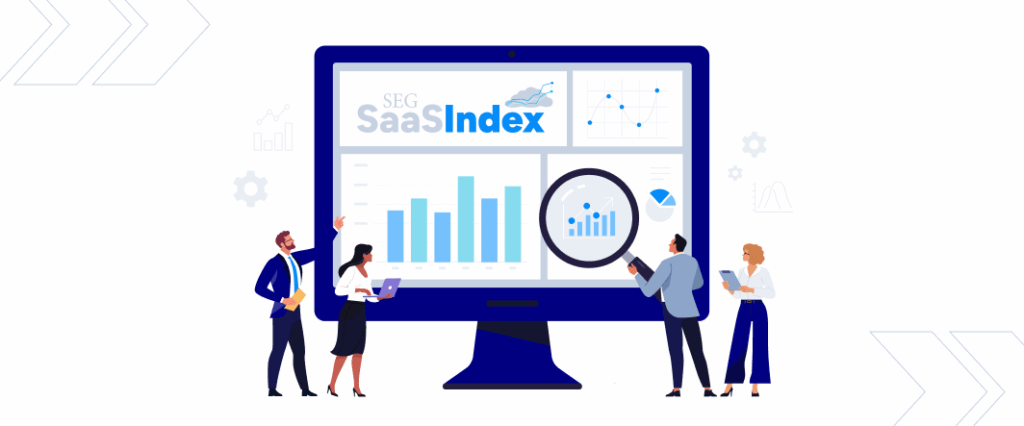The State of Manufacturing: Top Trends Driving SaaS Adoption in 2024
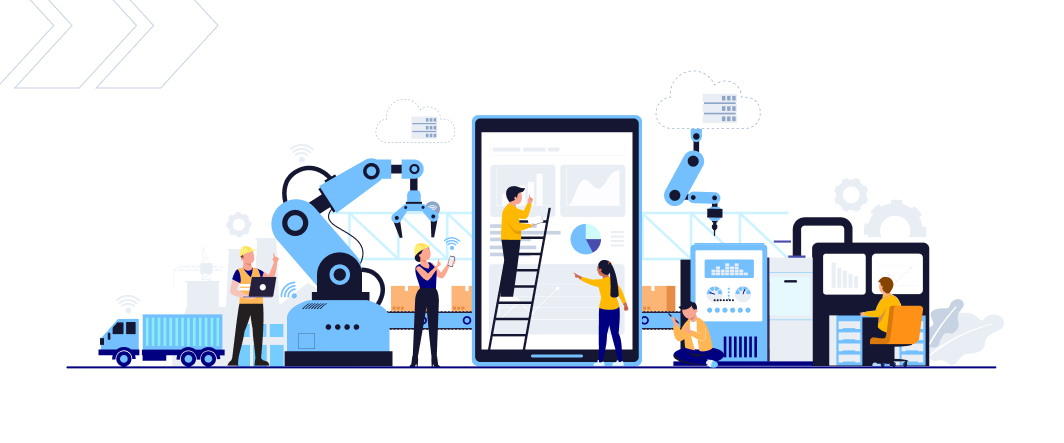
Technology continues to drive paradigm shifts in every industry, and the manufacturing sector is no exception. The rapid rise of automation and artificial intelligence is reshaping the industrial landscape as companies deal with shifting regulations, deglobalization, labor shortages, a challenging macroeconomic environment, and other secondary impacts of the COVID-19 pandemic. At SEG, we keep a close eye on the top digital transformation trends in manufacturing and the opportunities they create for SaaS businesses.
We partnered with our own Paul Lachance, an expert in manufacturing and industrial asset technology, to develop our Manufacturing Software Trends resource. This comprehensive resource page includes information on deal volume, the overall landscape, a breakdown of the sector’s categories, and more.
While most of the trends discussed in the original report are still relevant today, the state of the industry continues to evolve as technology advances and new cultural/geopolitical trends emerge. In this post, we’ll take a fresh look at the tailwinds accelerating the rapid adoption of SaaS in manufacturing and cover some newer manufacturing trends driving digital transformation through the industry.
Major Trends Driving Software Adoption in Manufacturing
The area of supply chain management offers an excellent example of the need for digital transformation in manufacturing. Over the past five years, the disruptions of the pandemic combined with trade wars, global military conflicts, and other “normal” supply chain issues, such as the Suez Canal blockage, have forced a complete re-envisioning of supply chain logistics. This trend helped hasten the adoption of SaaS solutions, and today, even as many of the supply chain issues have been resolved, SaaS has become table stakes for “just in time” manufacturers to operate efficiently and stay competitive.
Several other manufacturing trends stemming from the U.S. government’s response to the pandemic and heightened global volatility continue to provide strong tailwinds for SaaS:
- Reshoring: In reaction to the international upheaval caused by the pandemic as well as increased geopolitical instability, many U.S. manufacturers have engaged in “reshoring” (i.e., hiring and doing more business domestically) to gain more control over their supply chains and reduce risk. This trend has allowed companies to further implement lean operational processes and continues to create larger adoption opportunities for SaaS providers.
- The U.S. Infrastructure Bill: In 2021, President Biden signed the Infrastructure Investment and Jobs Act (IIJA), also called the Bipartisan Infrastructure Law, intended to invest $550 billion in a myriad of major construction projects across the country. The program is now in full swing, and as American manufacturers play a significant role in supplying parts and materials, SaaS companies also stand to benefit from their growth.
- “Made in America” Executive Order: This order, also signed in 2021, requires that federal dollars be spent on American manufacturers rather than foreign entities. Leaning into the same principles motivating reshoring, the order encourages the creation of new supply chain options that are less reliant on existing global networks.
- The CHIPS and Science Act: This legislation passed in 2022 further shores up U.S. manufacturers against international competition with more domestic production of semiconductors.
The positive impacts of these initiatives are already coming to light, with hundreds of new U.S.-based factories having opened in the past two years. Government investment in infrastructure has led to new plans for clean energy production, better and cheaper utility services, and upgraded transportation systems. Like the post-World War II period, the U.S. is making a concerted effort to make domestic manufacturers a pivotal part of its economic and political policy — a push that only has positive benefits for the industry, including software providers supporting manufacturing. There are challenges to this resurgence of U.S. manufacturing, however, and technology plays an essential role in keeping organizations agile, competitive, and profitable.
Software Enables Manufacturing Businesses to Adapt
Perhaps the most important lesson of the past few years has been the pivotal need to upgrade U.S. manufacturing technology from its previous antiquated state. Industry 4.0 technologies (AI, machine learning, the Internet of Things, advanced analytics, etc.) are becoming essential as businesses adapt to changing times. Digital transformation promotes lean processes and mitigates costs via automation and just-in-time product management.
Such agility and flexibility are becoming more essential every day due to a confluence of economic conditions. For example, skyrocketing inflation throughout 2022-2023 has increased costs across the board, demanding that manufacturers improve efficiency to remain profitable. At the same time, the labor market remains tight, as an aging workforce and technical skill gap have made it difficult for employers to find qualified, experienced workers. Between now and 2030, experts are predicting 2.1 million unfilled manufacturing positions, which will require companies to find ways to meet demand with fewer human resources.
These manufacturing trends mean companies are relying more than ever before on SaaS technology solutions to fill the gap and streamline processes in the most efficient ways possible. Looking ahead to 2024 and beyond, it’s clear that SaaS will be critical for companies to continue their growth and fortify their operations against economic flux and unpredictable external events.
SaaS Contributions to Digital Transformation
Beyond merely responding to the macroeconomic challenges of the day, forward-thinking manufacturers are pursuing digital transformation to drive efficiency through every aspect of their operations and differentiate themselves from competitors. The promise of Industry 4.0 – a digitally enabled, intelligent manufacturing ecosystem powered by advanced technologies – is just over the horizon, and software will play a leading role in bringing this new reality to life. While the applications are limited only to the imagination, some areas where SaaS solutions have especially high potential include:
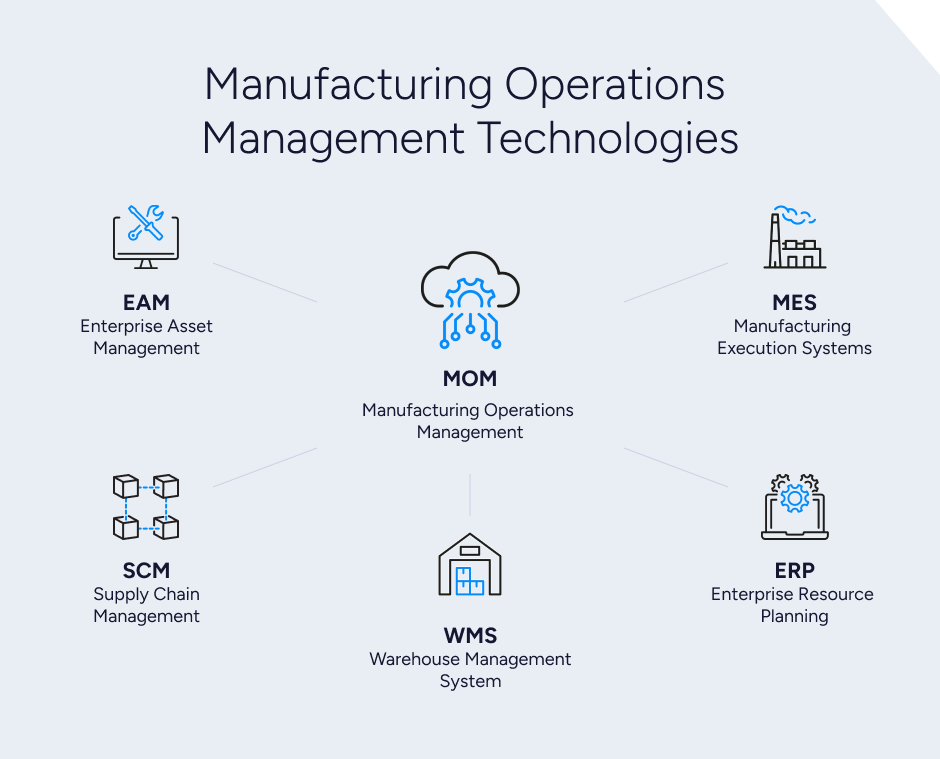
- Enterprise Asset Management (EAM): SaaS solutions, combined with IoT sensors and analytics, offer limitless possibilities for manufacturers to account for equipment, perform predictive maintenance, prevent downtime, and extend the useful life of machines.
- Manufacturing Execution Systems (MES): Companies need SaaS to provide complete control of the entire production process, capturing data from myriad sources to track raw materials, optimize production planning, identify bottlenecks, and reduce waste.
- Supply Chain Management (SCM): Manufacturers will rely on SaaS to give them greater visibility across their supply chains and deliver actionable insights to predict demand, better manage inventories, reduce risks, and lower costs.
- Quality Management Systems (QMS): SaaS will give manufacturers unprecedented power to monitor and control quality processes, detect and eliminate production errors, and stay in compliance with regulations.
- Warehouse Management Systems (WMS): Companies with vast stores of finished goods will become better than ever at tracking products across the enterprise, fulfilling orders, and minimizing losses due to expired or misplaced inventory.
- Enterprise Resource Planning (ERP): Integrating inputs from many systems and locations, SaaS ERP will help manufacturers automate various business processes and make more informed strategic decisions in less time.
The manufacturing trends and economic conditions shaping the industry present a clear case for digital transformation. U.S. manufacturers can ensure their operations remain cutting-edge by taking advantage of a rapidly growing set of software tools. SaaS companies that support the manufacturing industry are needed to streamline operations, offset labor and facility costs, and meet the reshoring demand.
In short, manufacturing is “hot” right now, and therefore, your manufacturing SaaS business is in high demand. To learn more about how your company can take advantage of these manufacturing tailwinds, contact SEG and reach out for a complimentary Strategic Assessment today.



